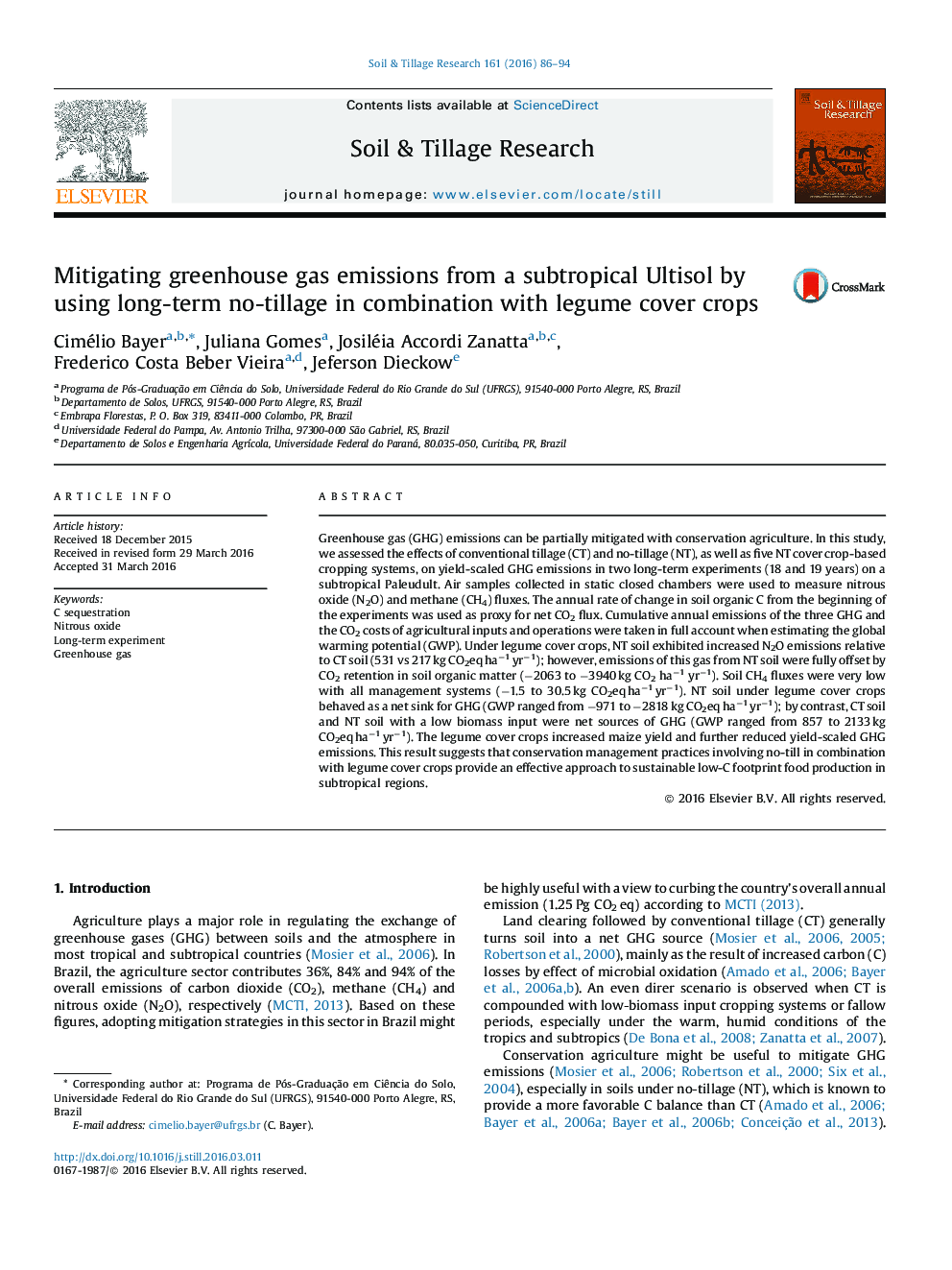| Article ID | Journal | Published Year | Pages | File Type |
|---|---|---|---|---|
| 6773429 | Soil and Tillage Research | 2016 | 9 Pages |
Abstract
Greenhouse gas (GHG) emissions can be partially mitigated with conservation agriculture. In this study, we assessed the effects of conventional tillage (CT) and no-tillage (NT), as well as five NT cover crop-based cropping systems, on yield-scaled GHG emissions in two long-term experiments (18 and 19 years) on a subtropical Paleudult. Air samples collected in static closed chambers were used to measure nitrous oxide (N2O) and methane (CH4) fluxes. The annual rate of change in soil organic C from the beginning of the experiments was used as proxy for net CO2 flux. Cumulative annual emissions of the three GHG and the CO2 costs of agricultural inputs and operations were taken in full account when estimating the global warming potential (GWP). Under legume cover crops, NT soil exhibited increased N2O emissions relative to CT soil (531 vs 217 kg CO2eq haâ1 yrâ1); however, emissions of this gas from NT soil were fully offset by CO2 retention in soil organic matter (â2063 to â3940 kg CO2 haâ1 yrâ1). Soil CH4 fluxes were very low with all management systems (â1.5 to 30.5 kg CO2eq haâ1 yrâ1). NT soil under legume cover crops behaved as a net sink for GHG (GWP ranged from â971 to â2818 kg CO2eq haâ1 yrâ1); by contrast, CT soil and NT soil with a low biomass input were net sources of GHG (GWP ranged from 857 to 2133 kg CO2eq haâ1 yrâ1). The legume cover crops increased maize yield and further reduced yield-scaled GHG emissions. This result suggests that conservation management practices involving no-till in combination with legume cover crops provide an effective approach to sustainable low-C footprint food production in subtropical regions.
Related Topics
Physical Sciences and Engineering
Energy
Renewable Energy, Sustainability and the Environment
Authors
Cimélio Bayer, Juliana Gomes, Josiléia Accordi Zanatta, Frederico Costa Beber Vieira, Jeferson Dieckow,
